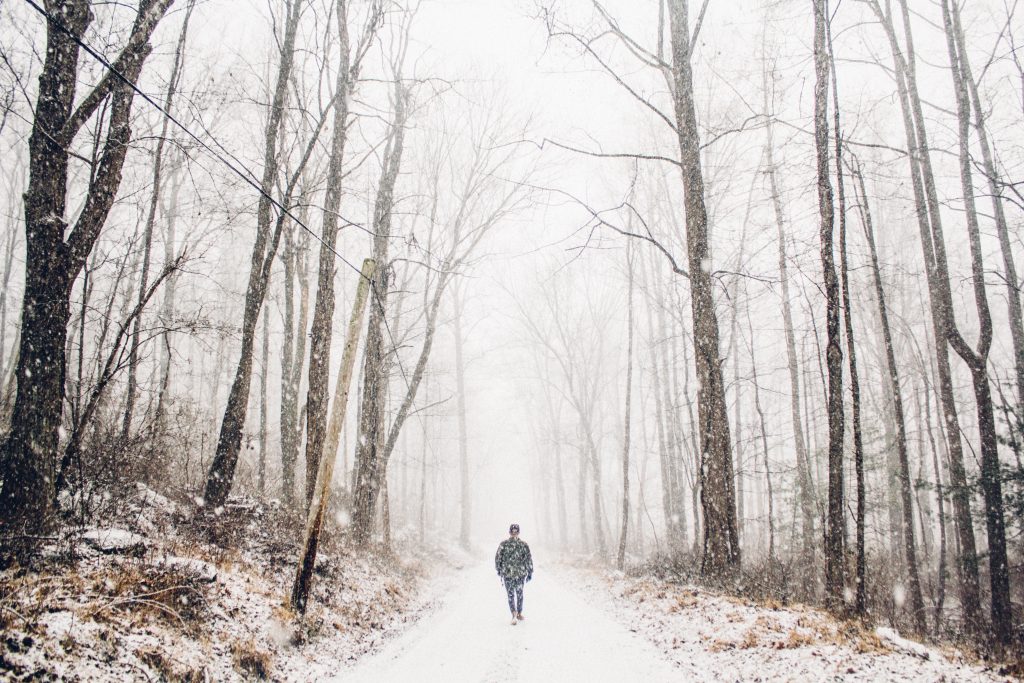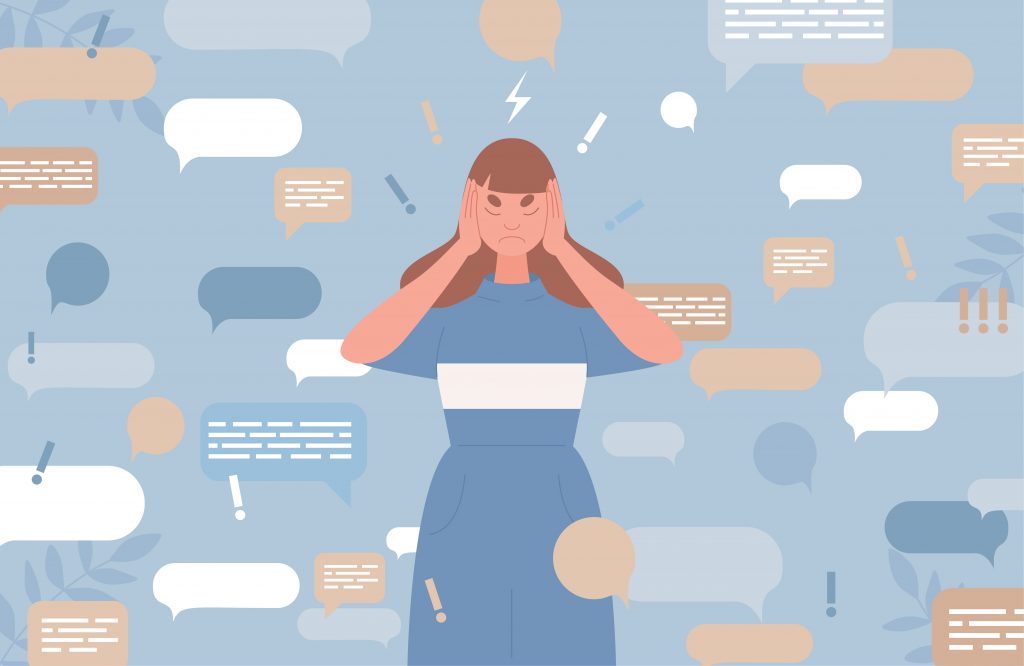One Foot in Front of the Other: emotional regulation in a complicated world

Sometimes emotions get so mixed up and confused, don’t they? And when they get that way, and we get overwhelmed by them, we lose sight of the ways in which they take control of our behaviour and choices.
Saturday was my last day with my youngest daughter, Maddy, before she returned to Vancouver for university. That’s where my emotional roller coaster started this past weekend – with some anticipatory grief and loneliness, mixed in with a little old-fashioned mama-worrying. As I’ve shared before, this particular daughter has been on a complicated health journey the last two years, and it’s taken an emotional toll on our whole family. Having her live far away from me now adds to that complexity.
On Saturday afternoon, Maddy and I went for a “podcast drive”. This has been one of our bonding past-times in recent years, especially during the pandemic when we’ve had few other options. We choose a podcast (usually either a long-form investigative journalism series about an intriguing murder or other crime, or something about cults or cultish leaders) and then head out for a long drive (usually with some tasty beverages). This time we drove to Birds Hill Park and reminisced about the many years we’ve attended the Winnipeg Folk Festival there and lamented the loss of it in the last two years.
On the way home, we drove through downtown Winnipeg and came across the local rally in support of the “Freedom Convoy” that’s recently made its way across Canada to Ottawa (to protest pandemic-related mandates). There were, admittedly, far more vehicles than we expected to see, and that filled us both with some frustration and despair.
I won’t go into all of the reasons why the Freedom Convoy troubles me (because that’s not what this post is about), except that I will mention a very personal one that felt like a heavy weight in the car for both my daughter and for me. She has lived through this pandemic with a disability and an autoimmune disorder that has made her particularly at risk, and our family has lived for nearly two years with uncertainty over whether her body could survive the virus. For us to witness so many people who want to overthrow mandates that may have helped keep her (and others like her) alive for two years, plus keep the healthcare system functioning well enough that she could have access to the many surgeries she’s needed, feels personal.
(When she finally did catch COVID last month, along with her sisters and me, she had, thankfully, already had three doses of the vaccine and – possibly since it was Omicron – her symptoms were not severe. Plus her trachea was more open than it’s been for much of the last two years – because the hospitals didn’t shut down and deny her access to those ten surgeries – so she was able to breathe relatively well.)
There’s a little more to add about what she was feeling at that moment… At the end of the convoy, Maddy (who’s been a climate activist for several years, partly as a way to cope with the climate anxiety so many youth are experiencing) said, with despondence in her voice, “If so many people distrust science, we’re never going to address climate change. We’re fucked.” On multiple levels, she was feeling abandoned and let down by the generations before her.
Not long after that, we got a text message from my other daughter, who works at a liquor store. She was in tears from the many belligerent customers at the store who, emboldened by the protests, refused to wear masks properly and were taking out their frustrations (and likely releasing some of the adrenaline from participating in the protest) on low-paid retail staff.
(Note: I know that there will be readers of this who may want to respond with other opinions about the convoy, and you have a right to your opinion, but I urge you simply to do your best to hold space for the story of what my daughters and I were feeling at the moment. If you care to stick with me, read to the end of this without rushing to defend your position.)
When we arrived home from our drive, Maddy disappeared into her room for a nap and I… well… at first I simply wandered around the house feeling lost and in despair and unsure of what to do with myself. My emotions felt all jumbled up and confused and there didn’t seem to be any clear way through them, nor was there any clear action that might help alleviate them. I considered going on social media, partly to distract and numb myself, and partly to feed my righteousness with the opinions of like-minded people, but I made a commitment near the beginning of the pandemic to give myself an intentional break from the siren call of social media on the weekends, and I knew that this wasn’t the right time to break that commitment.
I knew that social media would likely add to the messiness and dysregulation of my emotional state. Or it might over-simplify the emotions by making me believe only one emotion was relevant. Or it might numb the most overt emotions so that I’d miss the gifts of the more quiet ones. Or it might tempt me into reactive activism and then I’d get dragged into one of the many pointless debates that social media engenders that would only serve to activate my already-taxed nervous system.
Nope – social media would not serve any valuable purpose in that moment, so I stayed away from it. Instead, I bundled up (it’s been a cold winter around here) and headed out for a walk. Walking has long been a critical part of my self-care, and it’s been especially critical during the many months of this pandemic.
There’s something about putting one foot in front of another again and again, especially in natural spaces, that helps me work my way through many emotional states that threaten to overwhelm me. It’s a soothing repetitive action that draws me into a mindful state and out of nervous system activation. It slows me down, regulates my breath, and refocuses me so that I am able to witness and experience the emotions more individually and less as a jumbled mess. As I pass through each emotional state, the walking also helps me to release the emotion instead of getting attached to it.
Recently (on an audiobook that I thoroughly enjoyed), I heard Nick Offerman talk about how each step is actually a process of temporarily falling and then catching yourself just before you fall. Plant your foot, lift your other foot, fall forward, plant, lift, fall, plant. That temporary falling between steps, it occurred to me, is a form of liminal space – where we are in the in-between place of what used to feel sturdy and secure and what we hope will feel sturdy and secure in the future. In the in-between place, we have to trust the process and lean into the falling.
At the beginning of my walk, I was feeling unfocused and my mind raced from thought to thought, trying to make sense of the mixed-up emotions going on. It’s the mind’s job to try to make meaning out of emotions, and it stubbornly tries to do that on its own, forgetting that the body might actually be of support in the endeavour. Thankfully, though, I know enough not to leave the sense-making and regulation entirely up to my mind, so I just kept putting one foot in front of another, heading toward where I knew nature could also do its part.
A few blocks from my house, I stopped short. Right in front of me, lifting its head from the snow where it had been rooting around for food, was a deer. I’d been so distracted that I’d almost missed it. As I’ve mentioned before, I have a special connection with deer and, to borrow a sentiment from The Colour Purple, I think it “pisses God off if you walk by a deer in a field somewhere and you don’t notice it.” Even though I see deer on almost every walk, I still always pause to notice.
This deer sighting, and the awareness of the distraction that almost made me miss it, was exactly what I needed to bring me up short and remind me to be more fully present. I stood there and the deer and I stared at each other for several moments. Winter deer are particularly fluffy and this one had just had its nose in the snow, so it had a white snout that made me smile.
As I stood there, grief rose to the top of the emotion heap, found its way through the swirling clutter of my mind, and landed in my eyes. I stood there crying on the road and the deer watched me and I let it hold space for me in its unique deer-way.
Once the deer had turned and disappeared behind a house, I carried on. That’s when the other emotions started to line up behind grief and I tried to be mindful as each one came up, witnessing them and letting them pass. There was multi-layered grief, over my daughter leaving and over damaged relationships from the divisions this pandemic has fostered. There was helplessness, because I can do so little to protect any of my daughters or to change policies that might protect their future. There was anxiety over my daughter’s health, and over the state of the world in general. There was anticipatory loneliness, because my daughters are moving away and I am increasingly alone. There was frustration over this endless pandemic. There was sadness over our country’s lack of willingness and/or ability to support vulnerable people during a pandemic (and all of us in the face of climate change).
I walked and walked and, as I did, I breathed through each of my emotions. Drawing on my tenderness practice, I held space for all that I needed to feel and release. I didn’t judge the emotions or try to stifle them. I just walked and breathed. Plant, lift, fall, plant, lift, fall. Breathe, step, feel, breathe, step, feel.
By the end of the walk, my heart was, once again, at peace and my emotions were much more regulated. Though nothing had changed in my circumstances, everything had changed in my heart, mind and body. I had regained enough equilibrium to hold what I needed to hold, including the next morning when it was time to say good-bye to my daughter.
In his work on Nonviolent Communication, Marshall Rosenberg talks about how important it is in a conflict to name (and allow others to name) what we’re feeling and what we need. There’s a step (or two) before the naming, though, and that involves developing the skills and personal practices that help us get in touch with what we’re feeling. Unless I have developed some emotional intelligence and have some practices (like walking, breathwork, mindfulness, creative practice, meaningful conversations, journal practice, etc.) to help me hold space for my emotions, I won’t be able to tell you what I’m feeling, especially when there’s stress and anxiety flooding my nervous system.
We are nearly two years into a pandemic, and even those with high emotional intelligence are getting taxed in our ability to stay mindful and present and maintain (and/or return to) some sense of emotional regulation. Sadly, many of us have had no training or modeling in what it takes to hold space for our own emotions, so we often end up projecting those emotions onto other people and making decisions from our amygdalas (i.e. fight/flight/freeze/fawn) rather than settling ourselves enough to access our prefrontal cortexes so that we can make more thoughtful decisions.
When we are functioning largely in high activation and stress, especially for a prolonged period of time, we are also much more inclined toward confirmation bias and self-righteousness. We find evidence that will help support and strengthen our opinions and activation and we surround ourselves with people who help justify and affirm our positions. (For a helpful book on this, read Mistakes Were Made (But Not by Me).) We also more easily find ourselves on the victim triangle, looking for people to blame for our victimhood (and/or people to rescue us) instead of accepting that nobody is to blame and there are simply some circumstances that are beyond anyone’s control.
Then social media adds fuel to that fire. Not accidentally, social media feeds the activation and victimhood and gathers similarly activated people around us because that keeps us hooked on our screens longer. We get sucked in, and the cycle continues.
Sadly, an emotionally dysregulated person, fed by other emotionally dysregulated people, is not going to be able to process rational information that doesn’t prop up their belief system no matter how convincing that information is.
I know it’s hard right now, when we’re all exhausted and activated and there are too many people pushing our buttons, but if we want to get off this roller coaster and not get trapped in the powder kegs of conflict swirling around us all the time, we need to find our equilibrium and help others find theirs. That means finding practices that help us hold space for our emotions and then learning to regulate those emotions. It also means taking a break from social media and not giving in to the temptation to express (and/or validate) every opinion that feels really important in those activated moments. And it probably means setting boundaries and limiting how much we hear the voices and opinions that most contribute to the dysregulation of our nervous systems.
I’m not talking about sticking our heads in the sand and ignoring what’s going on – I’m talking about learning how to be with ourselves first so that we have greater capacity to be with others and engage in the kinds of meaningful conversations that might actually help to move the markers. Otherwise we’re just screaming into the void.
*****
P.S. If you want support in developing a practice that will help you hold space for your emotions, check out my free e-book, The House that Tenderness Built. And consider joining me in a 90 minute online workshop called Living in the House that Tenderness Built on February 12th.



